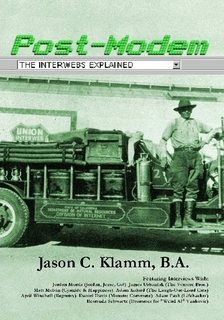In my book, Post-Modem: The Interwebs Explained, I discuss many of my favorite Internet Future Theories, including building colonies on Internet. One noticeably absent subject, however, is how we will refer to Interwebs, Internets and Webules in the future. This might seem trivial, but imagine those who said the same thing in the early part of the 20th century.
“How silly! Who cares how we might refer to bandages in this imaginary future. Whether we refer to them as finger stick ’ems, handages or Band-Aids, the blood will cease!”
How silly, indeed. Is what I would say to this hypothetical person. It might seem harsh to use their own words against them, but again, ignorance of the eventualities that time will bring is not an excuse for not understanding how things will work out. Forethought is key when divining what the future holds, and that is what I hoped this segment of my book to be, should I have conceived of it before







